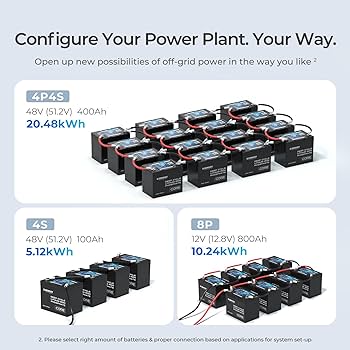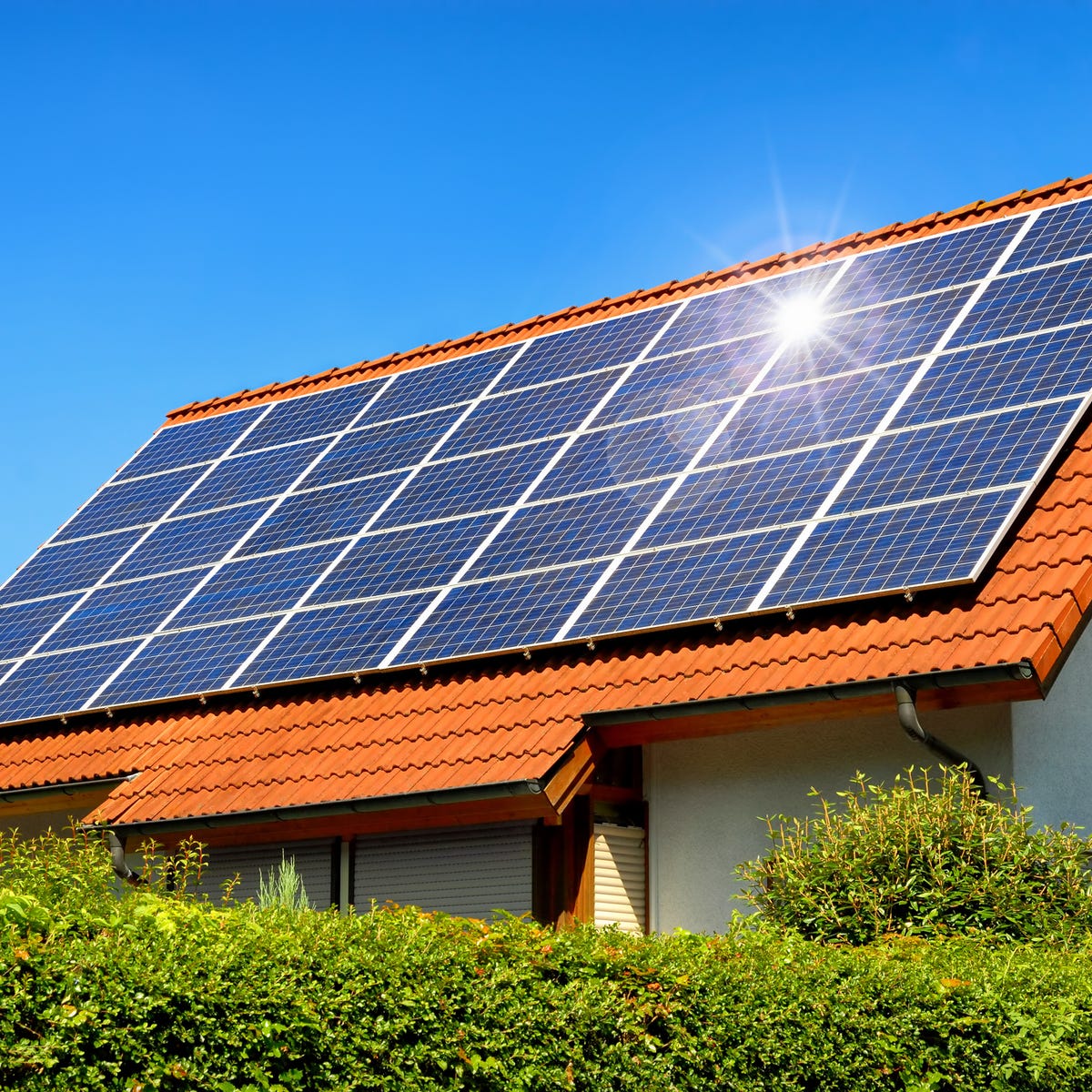Solar power system off grid are standalone systems that generate electricity from the sun and are not connected to the electricity grid. These systems consist of solar panels, batteries, inverters, and charge controllers, and are ideal for remote areas or locations without access to the grid.
Solar power systems off-grid provide an innovative and sustainable solution for generating electricity in areas that are not connected to the traditional power grid. These self-contained systems harness the sun’s energy through solar panels, allowing for the production of clean and renewable electricity.
With the focus on reducing carbon emissions and dependence on fossil fuels, solar power systems off-grid are becoming increasingly popular, offering a reliable and efficient source of energy. We will delve into the key components and benefits of solar power systems off-grid, providing a comprehensive understanding of this environmentally friendly solution for energy generation.

Credit: www.fiberopticlink.com
Benefits Of Off-grid Solar Power Systems
The utilization of off-grid solar power systems has gained immense popularity in recent years, owing to its numerous advantages. From energy independence to cost savings and environmental sustainability, these systems offer a reliable and eco-friendly solution for meeting your energy needs. In this blog post, we will explore the benefits of off-grid solar power systems, highlighting their contribution to energy independence, cost savings, and environmental sustainability.
Energy Independence
One of the key benefits of off-grid solar power systems is the achievement of energy independence. By generating electricity from the sun, you no longer have to rely solely on the traditional power grid.
This means that you won’t be affected by power outages or fluctuations, ensuring a continuous supply of electricity for your home or business.
With an off-grid solar power system, you have the freedom to generate and control your energy usage, providing you with the peace of mind that your energy needs are met regardless of external factors.
Cost Savings
Off-grid solar power systems offer significant cost savings in the long run. While the initial installation costs may seem higher compared to traditional grid-tied systems, the absence of monthly electricity bills and reduced reliance on fossil fuels result in substantial savings over time.
Additionally, government incentives and tax credits are often available for off-grid solar power system installations, further reducing the overall cost.
With a well-designed system and efficient energy usage, you can potentially eliminate electricity costs and recoup your initial investment within a few years.
Environmental Sustainability
Choosing off-grid solar power systems also contributes to environmental sustainability. As these systems harness energy from the sun, they produce clean and renewable electricity, making them an eco-friendly alternative to traditional power sources.
By reducing reliance on fossil fuels, off-grid solar power systems help mitigate air pollution, greenhouse gas emissions, and the depletion of natural resources. The use of solar power promotes a greener future while helping combat climate change.
By investing in an off-grid solar power system, you are making a positive impact on the environment and playing your part in creating a sustainable world.
Components Of An Off-grid Solar Power System
Solar power systems offer an eco-friendly and reliable off-grid energy solution. Understanding the components of an off-grid solar power system is crucial for anyone considering sustainable energy alternatives.
Each component plays a vital role in generating, storing, and converting solar energy into usable power. Let’s delve into the essential components of an off-grid solar power system.
Solar Panels
Solar panels are the foundation of any off-grid solar power system. These panels comprise photovoltaic cells that convert sunlight into electricity.
Placed strategically to capture maximum sunlight, solar panels serve as the primary energy source for the system.
Charge Controller
The charge controller regulates the flow of electricity from the solar panels to the battery bank, preventing overcharging and extending battery life.
This essential component safeguards the batteries from overcharging and deep discharge, ensuring their longevity.
Battery Bank
The battery bank stores the energy generated by the solar panels for use during periods of low sunlight or at night.
Comprising multiple deep-cycle batteries, the battery bank acts as a reliable energy reserve, providing power whenever sunlight is unavailable.
Inverter
The inverter is responsible for converting the direct current (DC) electricity stored in the battery bank into alternating current (AC) electricity, suitable for powering household appliances.
Efficiently transforming the stored energy, the inverter makes it possible to use solar power for various electrical devices and equipment.
Designing An Off-grid Solar Power System
Calculating Energy Needs
Calculating your energy needs is the first step in designing an off-grid solar power system. It involves determining the total amount of electricity you require daily. To do this, consider all your appliances, including lights, kitchen appliances, electronics, and heating/cooling systems.
Calculate the power consumption of each device in watts and estimate the number of hours you use them daily. Multiply the power consumption by the number of hours to get the energy consumption in watt-hours (Wh).
Sum up the energy consumption of all your devices to determine your daily energy needs. To simplify calculations, it’s recommended to convert your daily energy needs to kilowatt-hours (kWh) by dividing the total watt-hours by 1000.
This will give you a more practical value to work with when determining the size of your solar power system.
Make sure to incorporate a safety factor by adding around 10-20% to your daily energy needs to accommodate for unpredictable situations or future energy requirements.
Determining System Size
Once you have calculated your energy needs, it’s time to determine the size of your off-grid solar power system. The size of your system depends on factors such as your location, available sunlight, and the amount of energy you require.
To estimate the size of your system, divide your daily energy needs (in kWh) by the average peak sunlight hours you receive in a day. Average peak sunlight hours can be obtained from online resources or local weather data.
- Divide your daily energy needs by the average peak sunlight hours to get the solar panel capacity required in kilowatts (kW). The formula is: Solar Panel Capacity (kW) = Daily Energy Needs (kWh) / Average Peak Sunlight Hours (h).
- Round up the calculated solar panel capacity to the nearest whole number to determine the number of solar panels you’ll need. Keep in mind that solar panels are usually available in standard sizes, so you might need to adjust accordingly.
- Consider other factors such as shading, tilt angle, and panel orientation to ensure optimal performance of your solar panels.
Sizing Battery Bank
Now that you have determined the solar panel capacity, it’s important to consider the sizing of your battery bank. The battery bank stores excess energy generated during the day for use during cloudy periods or at night. To size your battery bank:
- Calculate the required battery capacity (in kilowatt-hours) by multiplying your daily energy needs (in kWh) by the number of days of autonomy desired. The number of days of autonomy represents the number of days you want your system to operate with stored energy without sunlight. A common value is around 2-3 days.
- Consider the battery voltage and the recommended depth of discharge (DOD) for the batteries you choose. The DOD represents the amount of energy you can safely draw from the batteries without damaging them. It’s typically recommended to have a DOD of around 50% for lead-acid batteries and 70-80% for lithium-ion batteries.
- Select the appropriate battery bank configuration by taking into account the battery voltage, DOD, and the capacity of individual batteries. Parallel or series configurations might be necessary to achieve the desired capacity and voltage.
Installation And Maintenance Of Off-grid Solar Power Systems
The installation and maintenance of off-grid solar power systems are crucial for efficient and reliable renewable energy generation. By properly assessing the site, ensuring correct mounting and wiring, and implementing effective monitoring and maintenance practices, users can maximize the benefits of their solar power systems. This article provides an overview of each stage, highlighting the key considerations to ensure a successful off-grid solar power installation.
Site Assessment
A thorough site assessment is the initial step in installing an off-grid solar power system. This evaluation helps determine the suitability of the location and optimize system performance. It involves assessing factors such as:
- Available sunlight: Understanding the solar resource potential of the site is crucial. Assess factors such as shading from nearby structures or vegetation that may limit sunlight exposure.
- Physical conditions: Evaluate the site’s physical conditions, including the terrain, orientation, and tilt angles, to determine the ideal placement of solar panels for maximum energy capture.
- Load requirements: Determine the energy demand of the site, considering current and future electrical needs to size the system appropriately.
Based on the assessment, users can make informed decisions regarding the system’s size, type of panels, battery capacity, and other essential components.
Mounting And Wiring
The correct mounting and wiring of solar panels are critical for their performance and longevity. Use the following considerations to ensure optimal installation:
- Mounting structure: Choose a sturdy and durable mounting structure that can withstand environmental conditions and securely hold the solar panels in place.
- Wiring: Employ high-quality, weather-resistant wiring to connect the solar panels to the charge controller, batteries, and inverter. Ensure proper wiring connections and protect wires from potential damage.
By adhering to best practices during the mounting and wiring process, system owners can enhance the efficiency and reliability of their off-grid solar power system.
Monitoring And Maintenance
To ensure the long-term performance of an off-grid solar power system, regular monitoring and maintenance activities are crucial. These activities help identify and address any issues promptly, improving system efficiency and durability. Consider the following:
- Performance monitoring: Regularly monitor the system’s energy production, battery levels, and inverter functionality to identify any deviations from expected performance.
- Cleaning and inspection: Clean the solar panels periodically to remove dirt, debris, and other contaminants that could obstruct sunlight absorption. Inspect all system components for any signs of damage.
- Battery maintenance: Properly maintain and monitor the battery bank, ensuring correct charging and discharging cycles to prolong battery life.
- Professional servicing: Schedule periodic professional inspections and servicing to ensure the system operates optimally and to address any complex technical issues.
By implementing an effective monitoring and maintenance plan, off-grid solar power system owners can maximize their energy production, extend equipment lifespan, and minimize downtime.
Challenges And Considerations For Off-grid Solar Power Systems
Solar power systems offer a sustainable and cost-effective off-grid energy solution, but they come with their own set of challenges and considerations. Understanding these factors is essential for ensuring the reliability and efficiency of off-grid solar power systems.
Intermittent Power Supply
Off-grid solar power systems are susceptible to intermittent power supply due to variations in sunlight intensity and weather conditions. This can cause fluctuations in energy production, affecting the overall power supply to the off-grid setup.
Seasonal Variations
Seasonal variations play a crucial role in off-grid solar power systems as the amount of sunlight received varies throughout the year. Understanding these fluctuations is vital for accurately sizing the solar power system to meet energy demands across different seasons.
Backup Power Options
Backup power options are essential for off-grid solar power systems to ensure continuous power supply during periods of low sunlight or equipment failures. Incorporating backup solutions such as battery storage and backup generators is crucial for maintaining a reliable off-grid power supply.

Credit: couleenergy.com

Credit: www.greenmaxtechnology.com
Conclusion
Off-grid solar power systems offer an eco-friendly and cost-effective way to harness energy. By utilizing the sun’s abundant resources, homeowners can enjoy self-sufficiency and reduced reliance on traditional electricity sources. With the potential for long-term savings and environmental benefits, off-grid solar power systems are a compelling choice for sustainable living.









